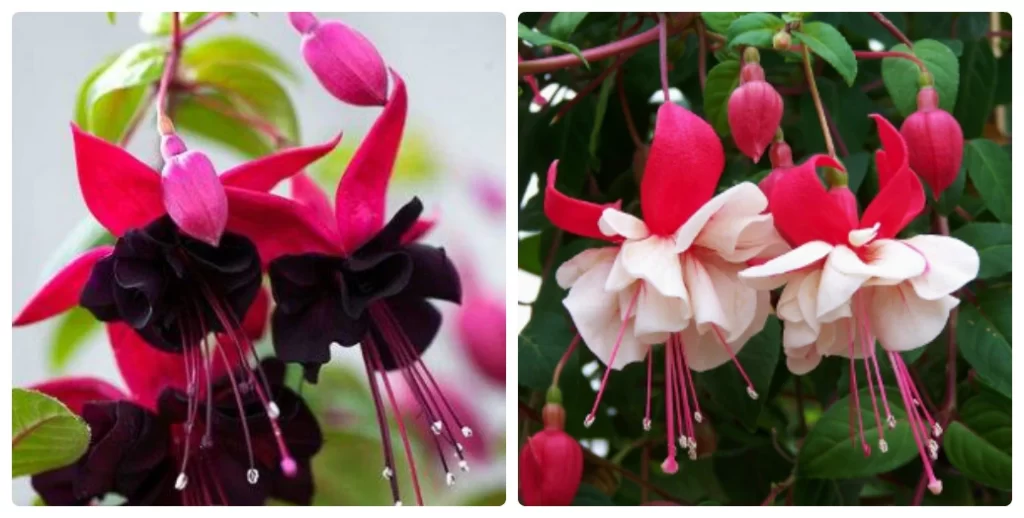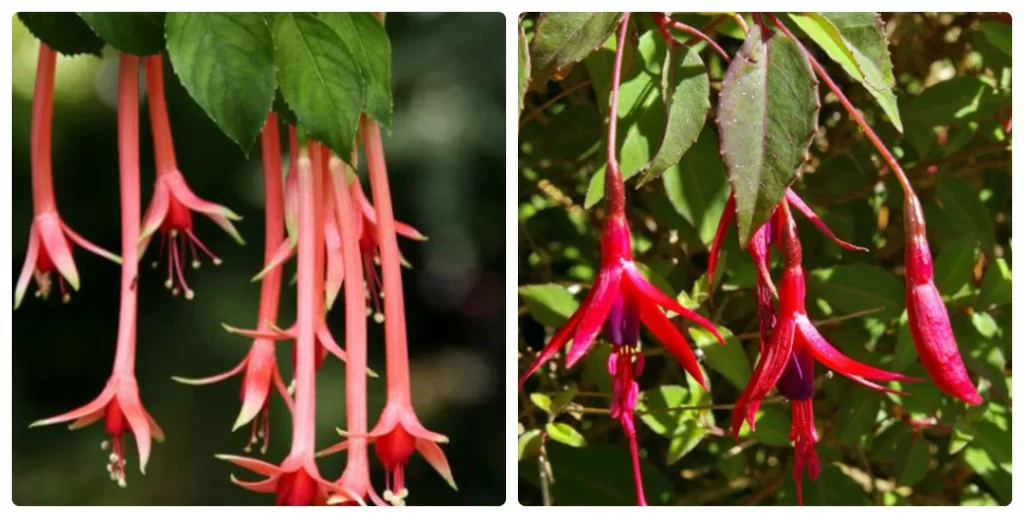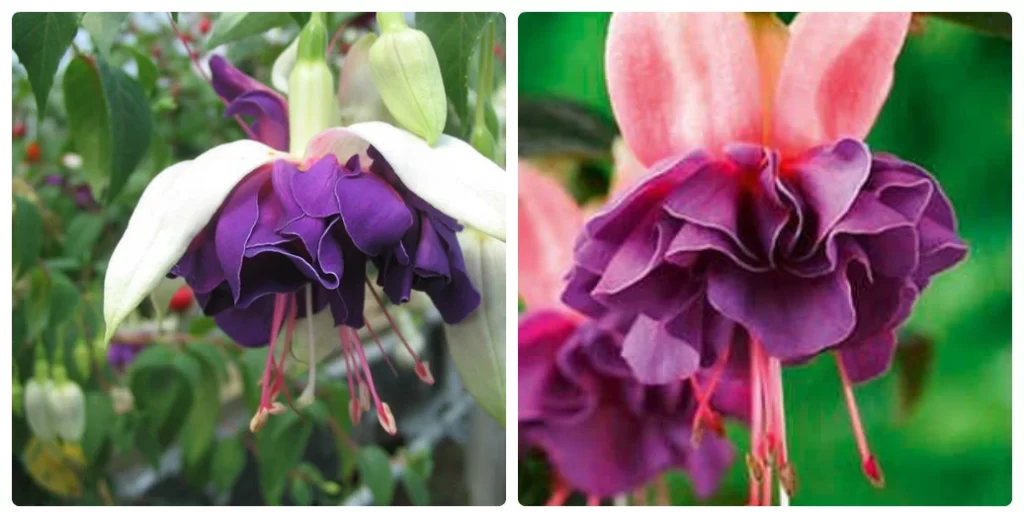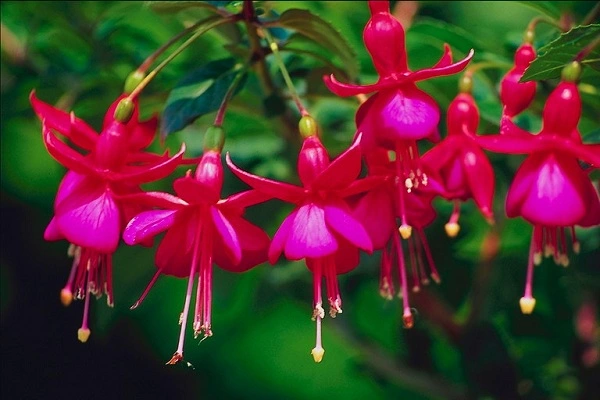Fuchsia – has long been known and loved by many houseplants. Its lantern flowers can be admired for several months, of course, if properly cared for.
FUCHSIA – a perennial, beautiful exotic flower. Fuchsia has an unusual shape and bicolor of the flower itself, which is very rare in other, familiar to us, flowers. These beautiful flowers will find their place in almost any garden, house or room. There are hundreds of hybrid forms of fuchsia flowers that will delight the eye with their unusual flowers from early spring to late autumn.

Flowers are terry, non-terry and semi-terry, ampel, tree-like, bushy; different color combinations, white, pink, red, purple, and two colors. So, you can pick up a whole collection of colorful fuchsias.
In fact, fuchsia is very easy to care for: just choose the right place, water frequently and rarely fertilize, then the flower will delight the eye with its unusually beautiful flowers from early spring to late autumn.

How to choose fuchsia?
First of all, choose the color of the flower and the size of the plant. Next, be sure to carefully inspect the plant for spots on the leaves to prevent rot.
Next: inspect the stems and turn the leaves, see if there are insects and cobwebs. If you have not seen or doubt that the plant is healthy, but you really want to buy fuchsia, bring it home, put it in the shade and treat with chemicals. Choosing a healthy plant and proper care will ensure long flowering and successful purchase.
Fuchsia care:

Place. Brightness of light
You need to choose the right place for the plant in the room, and in the summer in the yard. Fuchsia does not like frequent changes of location, because it is very sensitive to any changes (grows poorly, leaves and flowers fall). The best place for fuchsia will be bright light, but without direct sunlight. Be careful in summer, very hot weather weakens the fuchsia and it does not allow the plant to fully develop.
If there is not enough sunlight in the room, fuchsia will feel great under artificial lighting.
Ordinary fluorescent lamps are suitable for artificial lighting. If the fuchsia reaches for light and does not bloom for a long time – it means that it has little light.
The optimum temperature for keeping fuchsias in summer is 18-25 degrees. It is sensitive to too high temperatures. If possible, take this flower outside in the summer, it will feel great outdoors. In winter, fuchsia is transferred to an unheated room with a temperature of 7-10 degrees.
Watering and humidity for fuchsia
Fuchsia should be watered with stagnant water twice a day (morning, evening) in summer and until autumn on hot days, but do not overflow, as this can lead to root rot. Make sure the pot has a drain hole and good drainage. In addition to watering, fuchsias like high humidity, they should be sprayed often and even watered. Water for spraying and pouring should be at room temperature and settled.
Fuchsia should be watered very rarely in winter – as the soil dries.
Fertilizers for fuchsia
Fuchsias can be grown in pots or planted in open ground for the summer. Fuchsias that grow in the open ground is better to fertilize with biological fertilizers, but they respond well to mineral fertilizers, the main thing is not to overdo it, and those that grow in pots are suitable complex fertilizers for flowering plants. Plants should be fed no more than once every two weeks. It is impossible to feed in sunny weather, it is better in the evening. If the plants have very dry roots, first add a little ordinary water (so that the roots are not scorched by fertilizers), and then water with fertilizers. It is necessary to limit the use of fertilizers in late summer. Because at this time fuchsia is preparing for winter. In winter there is a period of dormancy and the plant does not need fertilizing.

How to transplant fuchsia
Fuchsia should be transplanted every spring.
The most obvious sign of the need for transplanting is the roots on the soil surface, the germination of roots from the drain hole in the bottom of the pot, or the deformation of the plastic pot. Fuchsias do not like overheating of the root system. Constant overheating can be dangerous for the plant, so be sure to use white clay pots or pots!
The new pot should be no more than 4 inches wide and 5 inches deep from the old pot. Why? A pot that is much larger gives the roots too much room to grow, excess water, which can contribute to root rot. Do not forget to choose a pot that has drainage holes to drain excess water. The upper part of the plant will not grow until its roots begin to fill the pot.

If you are using a new clay pot, soak it in water for a few hours before planting the plant.
The new clay pot is so dry that it will remove all the moisture from the soil.
Fuchsia soil should consist of peat, compost and humus (take 1 part), as well as 2 parts of coarse sand.
Pruning and formation of fuchsia
Fuchsia care must include pruning or pinching, which promotes active plant growth, health and renewal. Pinching is the removal of the upper part in order to reach the desired height. The purpose of pruning is to form the desired shape, density and size of fuchsia. It is best to prune and pinch in the spring and throughout the year if necessary to form a plant.
Reproduction of fuchsias
Fuchsia is propagated by seeds and cuttings. This is most often done when pruning fuchsias. You need to immerse the twig in water and wait for the roots or push into the ground a twig that will take root. Be sure to compact the soil around the twig in the ground to prevent air pockets, which can lead to rot.
Cover with a jar or cling film to provide the required humidity.
We put our pot in a warm and shady place. Leave for 30 days, watered periodically as the soil dries.
Pests, how to deal with them?
If you have pests such as whitefly, spider mite, you will have to fight them with chemicals: use a solution of carbophos, phosphamide.
Care after flowering
Faded flowers are removed, dried twigs are cut, sprayed against pests, brought into a cool room for wintering, added as the soil dries.

